Revolutionize Dining: Why QR Code Menus Are the Future of Restaurants
in waakif By WaakifUpdated on: 09/03/2024
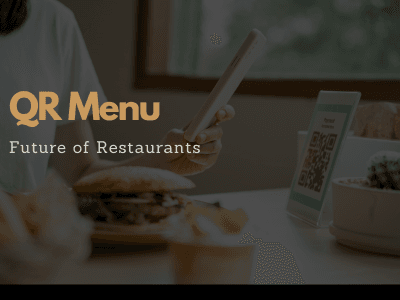
In today's digital age, technology revolutionizes every aspect of our lives, and the restaurant industry is no exception. Say goodbye to traditional paper menus and hello to the future of dining: QR code menus.
QR code menus are quickly gaining traction in the restaurant industry, and for good reason. With just a simple scan, diners can access an entire menu right from their smartphones. This innovative technology not only enhances the dining experience but also offers a range of benefits for both customers and restaurant owners. Customers can now easily browse through the menu, view detailed descriptions, ingredients, and even allergen information with just a tap. This eliminates the need for physical menus, reducing waste and promoting a greener dining experience. Additionally, QR code menus can be updated in real-time, ensuring that customers always have the most up-to-date offerings at their fingertips. For restaurant owners, QR code menus present an opportunity to streamline operations, reduce costs, and improve efficiency. Gone are the days of printing and reprinting menus or manually updating them. With QR code menus, changes can be made instantly, saving time and eliminating the need for constant physical menu revisions. With all these advantages, it's clear that QR code menus are the future of dining. Say goodbye to outdated paper menus and embrace the digital revolution. Experience the convenience, sustainability, and efficiency that QR code menus bring to the table.
Benefits of using QR code menus for restaurants
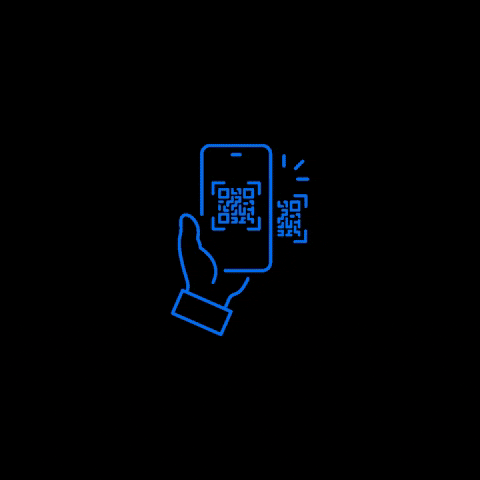
QR code menus offer a multitude of benefits for restaurants, making them an essential tool for modernizing the dining experience. Let's explore some of the key advantages:
- Enhanced customer experience: QR code menus provide customers with an interactive and seamless experience. They can easily navigate through the menu, explore different options, and access additional information such as ingredient lists, nutritional facts, and allergen information. This empowers customers to make informed decisions about their food choices, catering to various dietary restrictions and preferences. Moreover, the convenience of accessing the menu on their own devices eliminates the need for waitstaff to take orders, allowing for a faster and more efficient dining experience.
- Real-time menu updates: One of the biggest advantages of QR code menus is the ability to update them in real-time. Whether it's a new dish, a seasonal special, or a price change, restaurant owners can make instant updates to the menu without the hassle of printing new copies. This ensures that customers always have access to the most current offerings, preventing any disappointment or confusion. Additionally, real-time updates allow restaurants to respond quickly to ingredient availability, dietary trends, or even unexpected events like food recalls.
- Cost and time savings: Traditional paper menus come with recurring costs for printing and reprinting every time there is a change. With QR code menus, restaurants can eliminate these expenses entirely. Additionally, the time and effort required to design, print, and distribute physical menus are significantly reduced. QR code menus can be created and implemented quickly, allowing restaurants to focus on other aspects of their business.
- Promotion and upselling opportunities: QR code menus can act as a powerful marketing tool for restaurants. By including links to promotions, discounts, or loyalty programs, restaurants can encourage customers to explore additional offerings or revisit for future visits. Furthermore, QR code menus can be designed to showcase high-quality images, videos, or customer reviews, enhancing the visual appeal and credibility of the dishes. This can help to attract new customers and increase sales by highlighting the unique features and flavors of the restaurant's cuisine. Implementing QR code menus in your restaurant Now that we've covered the benefits of QR code menus, let's discuss how you can implement them in your restaurant. Here are the steps to get started:
- Choose a QR code generator: There are numerous QR code generator tools available online, which can help you create custom QR codes for your menu. Look for a reputable generator that offers customization options, such as adding your restaurant logo or changing the colors to match your branding.
- Create your menu: Before generating the QR code, ensure that your menu is well-designed and optimized for mobile viewing. Consider organizing your menu into categories, adding appealing food images, and providing detailed descriptions for each dish. Make sure to include any necessary information such as allergens, dietary labels, or special instructions.
- Generate the QR code: Once your menu is ready, use the QR code generator to create a unique QR code for your restaurant. Customize the QR code with your branding elements if desired. Ensure that the QR code is large enough to be easily scanned by smartphones and printed on various marketing materials such as table tents, posters, or even receipts.
- Train your staff and educate customers: Introduce QR code menus to your staff and provide them with the necessary training to assist customers who may have questions or difficulties using the technology. It's essential to educate your customers about the benefits of QR code menus and how to scan them. Consider displaying informative signs or providing instructions on your website or social media platforms. Designing an effective QR code menu Designing an effective QR code menu requires careful consideration of both aesthetics and functionality. Here are some tips to ensure your QR code menu delivers an engaging and user-friendly experience:
- Keep it simple: Avoid clutter and keep the design clean and minimalistic. Use clear fonts, legible text sizes, and ample white space to enhance readability. Remember, the goal is to guide customers seamlessly through the menu, so simplicity is key.
- Use high-quality visuals: Include appetizing food images that accurately represent the dishes. High-quality visuals can entice customers and help them make informed decisions. Be mindful of image file sizes to ensure fast loading times.
- Organize the menu: Categorize your menu items logically, such as appetizers, main courses, desserts, or dietary preferences. Consider using icons or symbols to denote vegetarian, vegan, or gluten-free options. This will make it easier for customers to navigate the menu and find what they're looking for.
- Optimize for mobile: Ensure that your menu is mobile-friendly and responsive, as most customers will be accessing it from their smartphones. Test the menu on various devices to make sure it displays correctly and functions smoothly. Avoid using Flash or other technologies that may not be supported on all devices. Promoting your QR code menu to customers Implementing QR code menus in your restaurant is just the first step. To maximize its effectiveness, you need to promote it to your customers. Here are some strategies to consider:
- Table tents and signage: Place table tents or signs on each table, encouraging customers to scan the QR code to access the menu. Include a brief explanation of the benefits, such as faster service or allergen information.
- Social media and website: Utilize your social media platforms and website to spread the word about your QR code menu. Create engaging posts or videos showcasing the convenience and features of the digital menu. Consider offering incentives such as exclusive discounts or promotions for customers who scan the QR code.
- Email marketing: Send out newsletters or emails to your customer database, introducing the QR code menu and highlighting its benefits. Personalize the message and offer incentives to encourage customers to try it out.
- Collaborate with influencers: Partner with local influencers or food bloggers who can promote your restaurant and QR code menu to their followers. This can help increase awareness and generate buzz around your digital menu. Addressing customer concerns and FAQs about QR code menus As with any new technology, some customers may have concerns or questions about QR code menus. It's essential to address these concerns proactively to ensure a smooth transition. Here are some common concerns and how to address them:
- Data privacy: Assure customers that scanning the QR code does not collect any personal data. Explain that the QR code simply redirects them to the digital menu and does not require any personal information.
- Accessibility: Address concerns about accessibility for individuals with visual impairments or those who may not have smartphones. Consider offering alternative options such as providing physical menus upon request or offering assistance to those who need it.
- Technical difficulties: Provide clear instructions on how to scan the QR code and access the menu. Offer support options, such as a dedicated helpline or assistance from staff members, for customers who may encounter technical difficulties. QR code menu best practices To ensure the success of your QR code menu implementation, here are some best practices to keep in mind:
- Regularly update your menu: Take advantage of the real-time updates feature and keep your menu current. Remove items that are no longer available and add new dishes or specials as they become available. This will prevent any confusion or disappointment for customers.
- Monitor customer feedback: Pay attention to customer feedback regarding the QR code menu. Listen to their suggestions or concerns and make necessary adjustments to improve the user experience.
- Track analytics: Utilize analytics tools to track customer engagement with the QR code menu. Monitor metrics such as the number of scans, popular menu items, or time spent on the menu. This data can provide valuable insights for menu optimization and marketing strategies. Conclusion: Embracing the future of dining with QR code menus QR code menus have the potential to revolutionize the dining experience for both customers and restaurant owners. The convenience, sustainability, and efficiency they offer make them an essential tool for modernizing the restaurant industry. By implementing QR code menus, restaurants can enhance the customer experience, reduce costs, and stay ahead of the competition. It's time to say goodbye to outdated paper menus and embrace the digital revolution. QR code menus are the future of dining, offering a seamless and interactive experience that caters to the needs and preferences of modern diners. So, why wait? Start revolutionizing your restaurant's dining experience today with QR code menus.
How QR code menus work
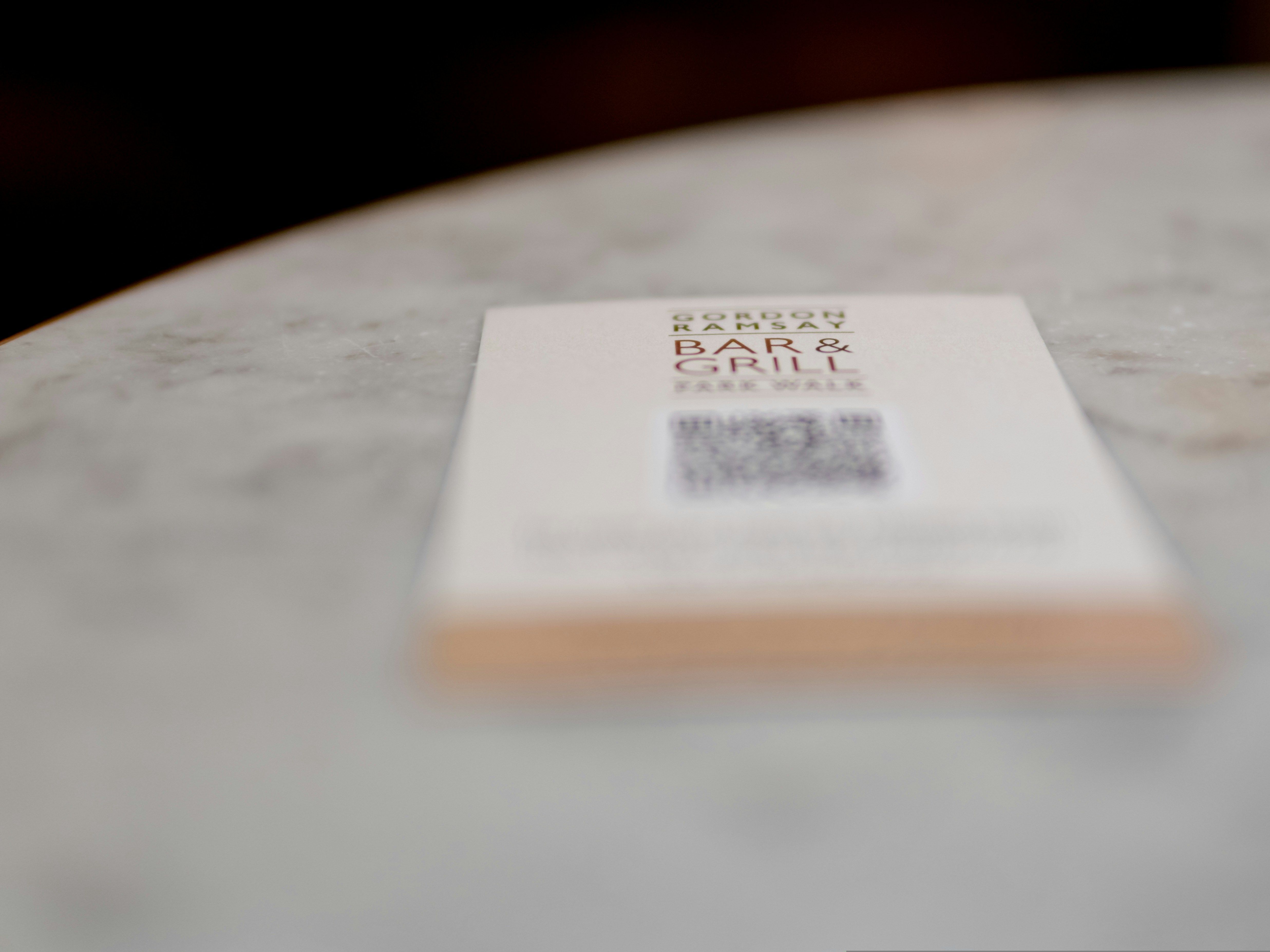 QR code menus function by utilizing quick response (QR) codes, which are two-dimensional barcodes that can be scanned using a smartphone or QR code scanner app. These codes contain information, such as a link to the restaurant's digital menu. When a customer scans the QR code, they are instantly directed to the menu, which can be viewed on their device.
The beauty of QR code menus lies in their simplicity and ease of use. Customers no longer need to wait for a physical menu or rely on servers to provide them with the menu options. With just a few taps on their smartphone, they have access to a digital menu that is interactive and informative.
QR code menus function by utilizing quick response (QR) codes, which are two-dimensional barcodes that can be scanned using a smartphone or QR code scanner app. These codes contain information, such as a link to the restaurant's digital menu. When a customer scans the QR code, they are instantly directed to the menu, which can be viewed on their device.
The beauty of QR code menus lies in their simplicity and ease of use. Customers no longer need to wait for a physical menu or rely on servers to provide them with the menu options. With just a few taps on their smartphone, they have access to a digital menu that is interactive and informative.
Implementing QR code menus in your restaurant is a straightforward process that can yield significant benefits. To get started, you'll need to create a digital version of your menu that can be accessed via a QR code. This can be done by working with a digital marketing agency or using DIY online tools.
Once you have your digital menu, you'll need to generate a QR code that links to it. There are numerous QR code generator websites or apps available that can help you create a QR code specific to your menu. Once the QR code is generated, you can print it and display it prominently in your restaurant.
Designing an effective QR code menu
Designing an effective QR code menu is essential to ensure a seamless user experience. When creating your digital menu, make sure it is visually appealing, easy to navigate, and reflects your restaurant's branding. Use high-quality images, clear descriptions, and organize the menu in a logical manner. Remember that customers will be viewing the menu on their smartphones, so optimize the design for mobile devices. Ensure that the text is easy to read, buttons are large enough to tap, and the menu is responsive across different screen sizes.
Waakif helps to design and create catalogue with Waakif AI generated product images.
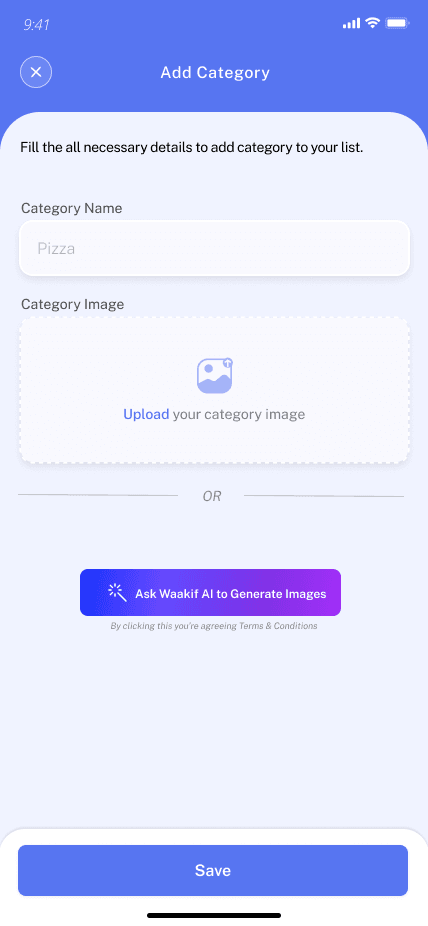
Promoting your QR code menu to customers
To maximize the adoption of your QR code menu, it's crucial to promote it to your customers. Start by placing QR code stickers on tables, menus, and other visible areas throughout your restaurant. Train your staff to inform customers about the QR code menu and how to use it.
Additionally, leverage your online presence to promote your QR code menu. Update your website and social media profiles to highlight the convenience and benefits of using QR code menus. Consider running targeted ads or offering incentives to customers who scan the QR code and use the digital menu.
Addressing customer concerns and FAQs about QR code menus
As with any new technology, some customers may have concerns or questions about QR code menus. It's important to address these concerns proactively to alleviate any doubts. Common concerns may include the privacy of personal information, security, or compatibility issues. Assure your customers that QR code menus do not collect any personal information, and the scanning process is secure. Provide clear instructions on how to use the QR code scanner app and offer assistance if needed. By addressing customer concerns upfront, you can build trust and encourage more customers to embrace QR code menus.
QR code menu best practices
To ensure the success of your QR code menu implementation, it's important to follow some best practices. First, regularly update your digital menu to reflect any changes in offerings or prices. Customers should always have access to the most up-to-date information.
Second, regularly test the functionality of your QR code to ensure it is working correctly. Broken or incorrect QR codes can frustrate customers and discourage them from using the digital menu. Regularly check and update the QR code as needed.
Finally, gather feedback from your customers to continuously improve the QR code menu experience. Listen to their suggestions and make adjustments accordingly. By actively seeking customer feedback, you can refine and optimize your QR code menu to better serve your customers' needs.
Conclusion: Embracing the future of dining with QR code menus
In conclusion, QR code menus are revolutionizing the dining experience and are undoubtedly the future of restaurants. Their convenience, sustainability, and efficiency make them a win-win for both customers and restaurant owners. By embracing QR code menus, restaurants can enhance the dining experience, reduce costs, and stay ahead of the competition.
So, say goodbye to outdated paper menus and embrace the digital revolution. Implement QR code menus in your restaurant and witness the positive impact they can have on your business. With QR code menus, dining out will never be the same again. Remember, the future is here, and it's in the palm of your hand – with just a simple scan.
Try Waakif Today!
- 👉 Online Orders
- 👉 Digital Catalogue
- 👉 Whatsapp invoice
- 👉 Track earnings
- 👉 Customer Retention
- 👉 Loyalty Tracker
- 👉 Offers & Campaigns

retention
Serving Success: 11 Waakif Ways to Boost Customer Retention in Your Restaurant
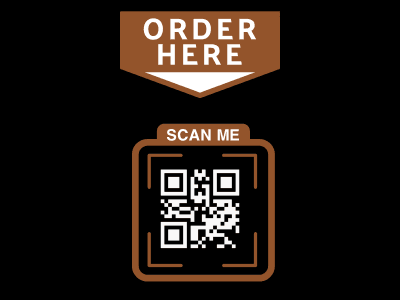
waakif
Revolutionize Dining: Why QR Code Menus Are the Future of Restaurants

customer loyalty program
Add Customer Loyalty Programs to Your Business

Order Management
Elevating the Art of Customer Order Experience: Unveiling Waakif Ways and Data-Driven Brilliance

qr menu